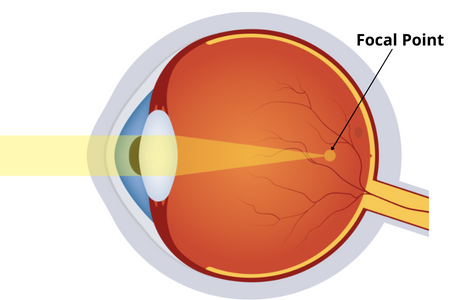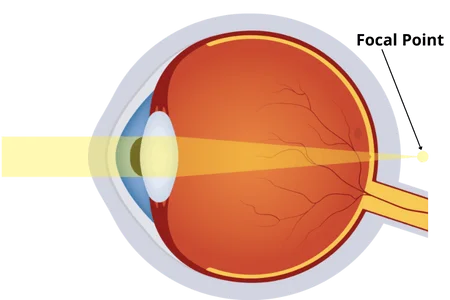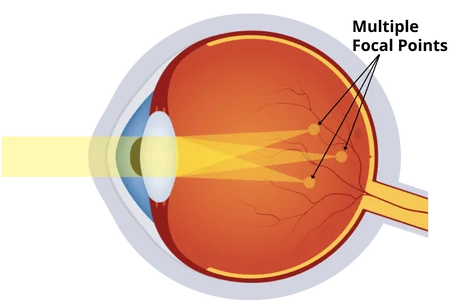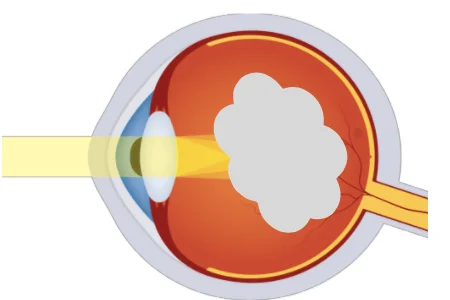Common Vision Problems
We think that everyone should be able to see the world clearly. That is why we’ve dedicated our lives to helping people with eye disease.
Book Free Consultation
Book Appointment or Video Consultation online with top eye doctors
Overview Common Vision Problems
Our vision is a highly treasured sense, and we consistently take the necessary steps to protect our eyesight. The eye’s main task is to accurately form an image by focusing light via the cornea and retina. In this process, lenses are indispensable components that adjust incoming light while expanding or contracting it when needed. Furthermore, the thin layer of tissue known as the retina receives images from both parts of our eyes before sending them up to our brain with its optic nerve. Containing more than one million nerve fibers, the optic nerve is a critical component of sight. This vital structure transmits visual information from the retina—which converts light into electrical impulses—to the brain for interpretation. Through this process, we are then given vivid and precise images to observe in our world.
Understanding the Prescription.
Common vision issues such as myopia, hyperopia, astigmatism, cataract, and presbyopia can be evaluated with a dioptre that assesses the light-bending properties of an optical system. To improve your eyesight conditions you have various options; wearing glasses or contact lenses are two of them. The symbol for eyeglasses to indicate the diopter is “D” while they use “C” when it comes to contacts – whereas (-) stands for nearsightedness correction and (+) represents longsightedness assistance in corresponding cases.
If you have vision problems that can’t be corrected with a pair of glasses, your optometrist will likely prescribe lenses with three numbers to indicate the degree of nearsightedness or farsightedness in one eye and how much astigmatism is present in each eye. These values often differ between eyes, so make sure they are written down separately for each. Generally speaking, individuals with more severe visual impairments will require greater dioptre power from their eyeglasses or contact lenses.

Common Vision Problems
You may understand the vision problem you’re experiencing and check your dioptre values after any of the following difficulties, then visit a doctor for a consultation.

Myopia
Myopia, or nearsightedness, is an eye disease in which the eye can focus on nearby objects well but not distant ones. This may cause headaches and eye discomfort as a result of being unable to see faraway things as well as Myopia surgery. The objective of myopia surgery is usually to flatten the cornea so that light can focus on the retina better. Myopia can be helped by using a concave lens which diverges light before it hits the eye’s lens.
Hyperopia
Hyperopia, or farsightedness, is a problem where things at a distance are easy to see but nearby items are difficult. Hyperopia’s symptoms can be severe headaches and blurred vision if it isn’t treated quickly. To improve the focusing power, the aim of laser eye surgery is to elongate the eye and make the cornea more curved. The power of the lens that’s used to fix vision is given in diopters, with a plus sign.


Astigmatism
The eyes are not completely round when someone has astigmatism. The corneal curvature is not entirely symmetrical, and the cornea is irregular. Light scattering due to irregularities causes visual abnormalities. The asymmetry in the eye’s curvature is corrected by reshaping the uneven portions of the cornea with lasers. Cylindrical lenses may also be used. Lasik surgery can provide a long-term cure by correcting the vision and preventing the need for glasses or contact lenses.
Cataract
It occurs when the lens becomes opaque and vision is lost completely. A cataract is a clouding of the natural lens, which focuses light and generates clear, sharp pictures. It’s most often seen in older folks. Cataracts can only be treated by surgery. For cataract surgery, phaco technology is used which requires a very small incision. A high-frequency waves are generated through this tip to break the cataract into small pieces, which are then removed through the same tip. A thin ‘capsule’ or shell is left behind. After removal of the cataract, the surgeon inserts an intraocular lens (IOL) in the patient’s eye. After days of cataract surgery, the patient can see better. Cataract surgery is usually successful and has a low complication rate. We provide effective cataract surgery in Delhi.


